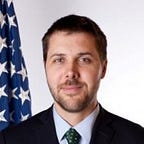President Obama’s Clean Power Plan is a Strong Signal of International Leadership
From drought-parched Brazil to the increasingly ice-free Arctic Ocean, from the rising seas along the Florida coast to the punishing heat waves hitting South Asia, in communities large and small, rich and poor, urban and remote, we can see the irrefutable evidence of what science has long told us was coming. Climate change is real, it is being driven by human activity, and it is affecting the lives of people across the United States and around the world today.
That’s why this week, President Obama finalized the Clean Power Plan, an ambitious and historic step in the United States’ fight to cut carbon pollution, clean our air, and do our part to prevent catastrophic climate change.
The Clean Power Plan sets the first-ever national carbon pollution standards for the power sector, the single-biggest source of carbon emissions in the United States. The final plan will cut carbon pollution from the power sector 32 percent by 2030 — a 9 percent increase over the proposal released last June by the Environmental Protection Agency — and keeps the United States on track to meet President Obama’s 2020 and 2025 goals to cut emissions economy-wide.
But the overall emissions target is only one part of the story. The Clean Power Plan will significantly boost clean energy as a share of the United States’ energy mix and give states increased flexibility in how they reach their final emissions reduction targets, all while reducing energy costs for consumers and businesses above and beyond the proposal.
The Environmental Protection Agency received more than 4 million public comments in response to their proposal — an all-time record for the agency. And by responding to legitimate comments raised by states, utilities, the public health community, and other stakeholders, the final Clean Power Plan is both stronger and more flexible.
The plan begins in 2020 with a new Clean Energy Incentive Program to encourage states to take early action to boost deployment of carbon-free renewable energy technologies that are the essential building blocks for deep long-term decarbonization of the power sector. This new program will also prioritize energy efficiency improvements in low-income communities, where the need for investment is greatest. While states will have until 2022 to demonstrate compliance under the Clean Power Plan, full utilization of the Clean Energy Incentive Program will cut emissions in 2020 by as much as the proposed rule and reduce cumulative emissions through 2031 by more than the proposal.
All told, these changes mean that the United States will see a big uptick in renewable energy as a share of its electricity generating capacity — over 30 percent more in 2030, as compared to the proposed rule.
The bottom line is this: the final Clean Power Plan represents an even stronger step forward in the fight to curb carbon pollution than last year’s proposal and will step up our transition to a lower-carbon energy sector and economy.
The program builds on a strong base of actions President Obama has already taken to combat climate change and drive down U.S. emissions — a comprehensive approach that is already delivering results. In 2009, when the President pledged to cut emissions in the range of 17 percent below 2005 levels by 2020, our emissions were projected to grow indefinitely. Instead, through innovation and strong executive actions, emissions are already down about 10 percent.
By finalizing a stronger Clean Power Plan, President Obama is underscoring his commitment to leading the fight against climate change and to meeting our 2020 and 2025 climate goals just months before negotiators gather in Paris to work to conclude a new international climate agreement. Already, U.S. leadership is paying leadership internationally. Since the United States and China stood side by side to announce ambitious long-range climate targets last November, nations representing 70% of global energy-based carbon emissions have come forward with climate policies of their own.
And the United States is not done yet. In the months ahead, the President and his administration will do even more to curb emissions, to deploy more clean energy, to boost energy efficiency, and to partner with the private sector.
No one nation can solve the climate challenge — but no nation can stand on the sidelines, either. With the Clean Power Plan, the United States is reaffirming our commitment to lead the charge.
